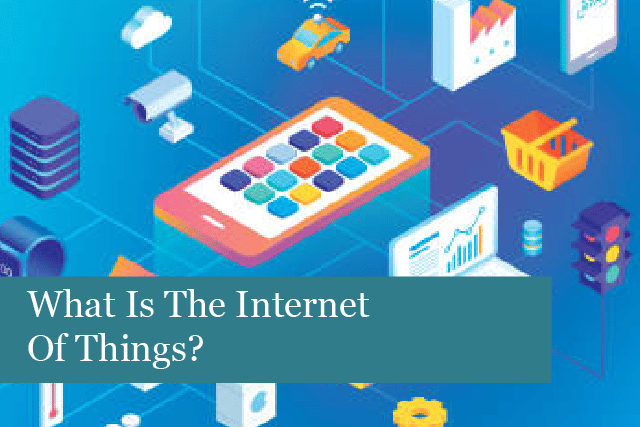
You’ve probably heard the term “Internet of things” or “IoT” quite often in recent years. And you’re sure to hear more about the Internet of things as time goes forward and new technologies are developed that rely on IoT.
But what is the Internet of things? How does it work? And why is it so important? These are some of the questions we’ll review in this article. So, read on to learn more about the Internet of Things!
What is the Internet of Things?
The Internet of Things (IoT) is a network that physical things can connect to. These physical things have sensors, software, and other technologies that are used for connecting and exchanging data and other devices or systems across the Internet. The devices are found at home, where household objects can connect to the Internet. Even manufacturers and offices have devices that connect to the IoT.
Examples of devices include everything from smart microwaves that cook your food for the right amount of time, to self-driving cars, wearable fitness trackers, and more. There are even connected footballs that measure the distance and speed they’re thrown.
More than 7 billion devices currently connect to the IoT network. Experts expect this number to grow to 22 billion by 2025.
Why is the Internet of Things So Important?
In recent years, IoT has become one of the most important technologies of the 21st century. It’s now possible to connect everyday objects such as kitchen appliances, baby monitors, security systems, and more to the Internet. These devices include sensors and devices built-in that provide communication with people, processes, and things across the Internet.
It’s now possible for objects to connect to the Internet and run without our intervention. That’s right—objects can run without humans! The world has become a hyperconnected place where digital systems can take care of everything from monitoring, recording, and making adjustments between connected objects. This is literally where the physical world meets the digital world, working together for the benefit of humans.
What Tech Has Made the Internet of Things Possible?
The concept of IoT has been around for a while; however, recent advances in technology have brought this concept to life. Here are some of the most important technologies that have made IoT practical and real:
Connectivity: network protocols for the Internet have made it easy to connect sensors to the cloud and other things online. They’ve also made the efficient transfer of data possible.
Access to low-cost, low-power sensors: another important technology has been the development of affordable and reliable sensors that make the Internet of Things possible for manufacturers and homes.
Cloud computing platforms: with the increase in cloud computing platforms, the IoT becomes possible. Businesses and consumers are able to access the infrastructure necessary to scale without having to manage it all due to cloud computing.
Machine learning analytics: advances made in machine learning analytics and access to various types of data stored in the cloud have made it possible for businesses to gather insights faster and more easily. These technologies continue to make advancements and push the boundaries of IoT and how it’s used.
Conversational artificial intelligence (AI): advances in neural networks have brought natural language processing (NLP) to IoT devices and made them more appealing, affordable, and useful. Examples of these technologies include Alexa, Cortana, and Siri, which work with us to do tasks, track things, order groceries or takeaway, and more.
What is Industrial IoT?
Industrial IoT (IIoT) is an application of IoT technology used in industry. It has to do with instrumentation and control of sensors and devices that work with cloud technology.
More and more, industries are turning to machine-to-machine communication (M2M) to develop wireless automation and control. However, with the advent of cloud and allied technologies, industries can take the technology even further. They’re developing a new automation layer and using it to create new revenue and business models. IIOT is something referred to as the fourth wave of the industrial revolution (Industry 4.0).
Here are some of the most common uses for IIoT:
- Smart power grids
- Smart manufacturing
- Connected assets and preventive/predictive maintenance
- Smart cities
- Connected logistics
- Smart digital supply chains
Today, it’s possible for a farm tractor equipped with IoT technologies to harvest crops, and more. This is only one example of the power of IoT at the industrial level.
What are IoT Applications?
IoT applications are prebuilt software-as-a-service (SaaS) apps that can analyse and present sensor data to business users. The information is displayed in a dashboard. The applications use machine learning to analyse large amounts of data collected from sensors in the cloud.
With real-time IoT data and notifications, it’s now possible to view data on key performance indicators, statistics for mean time failures, and more. Machine learning algorithms can now find and identify equipment issues, send alerts to users, and trigger automated fixes or proactive measures to fix the issue.
An example is a business that can quickly get data on their supply chains, customer service, human resources, financial services, and even customer actions are now possible. And it’s all done through sensors, connected objects, and the Internet.
What Industries Can Benefit from IoT?
Businesses that are a good fit for IoT and could benefit from sensor devices in their business processes, include:
Automotive
The automotive industry can make huge changes with the use of IoT apps. Not only can the technology be applied to production lines, but the sensors used can also detect equipment failures before they happen and let the business know. For instance, in the case of a driver, the vehicle can alert them that there’s an impending problem that needs to be addressed now.
Transportation & Logistics
Transportation and logistics systems can also benefit from IoT technologies. Fleets of cars and trucks, shops, and trains that carry inventory can be rerouted in case of bad weather. Inventory can be equipped with sensors to track and trace, monitor temperature control, and more.
Companies in the food & beverage, flower, and pharmaceutical industries could benefit from sensors that provide information about temperature-sensitive inventory. Sensors could send notifications when the temperature was too high or low to improve the shelf-life of a wide range of products.
Healthcare
Healthcare can also benefit from the use of IoT technology. Doctors, nurses, and others in healthcare could know the location of medical equipment such as wheelchairs and other healthcare assets. This would ensure better usage and account for medical equipment in clinics, hospitals, and other healthcare facilities.
And the list goes on. There are beneficial applications for almost every industry and job you can think of.
Summing It Up
IoT is becoming a valuable, effective tool that’s changing the world. What’s more, as IoT continues to mature, the many uses for this technology will integrate even more with human lives and culture. Eventually, most of our living and working arrangements. Smart items are a welcome technology that can do much to benefit our lives and our work.
Recommended Posts

Prepare for Windows 10 End of Life: What You Need to Know
18th July 2025

5 Ways Cloud-Based IT Solutions Can Empower Your UK Business
12th July 2025

Are you making the most of your Microsoft 365 licensing?
4th July 2025
